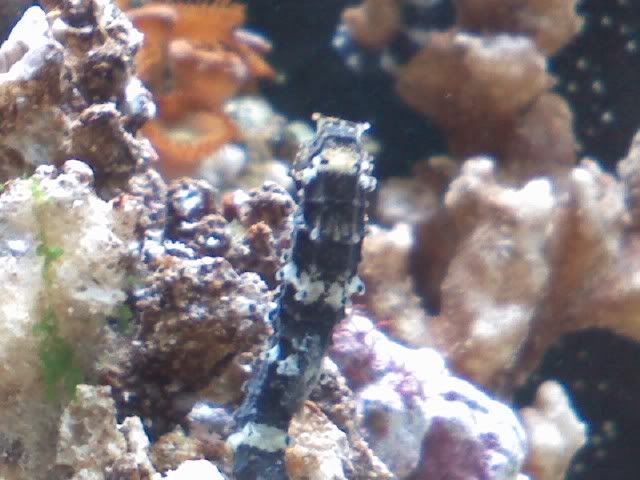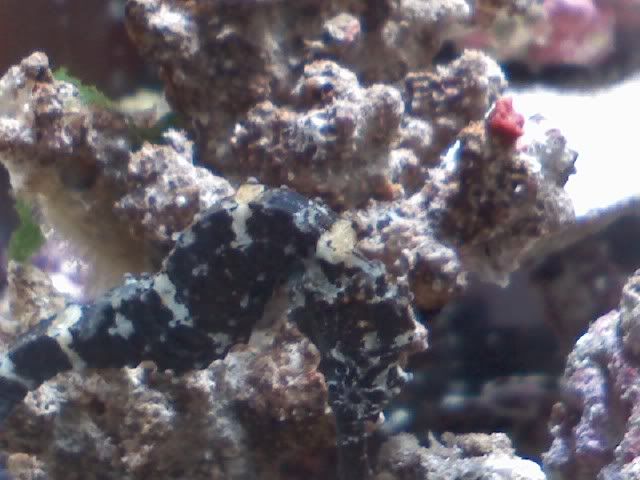Originally Posted by
ann83
http:///forum/post/3127048
The brown definitely looks like algae. Is the tank newly set up?
To do a freshwater dip, use RO/DI water or dechlorinated tap water. Add a marine buffer (I usually use Seachem Marine Buffer), and aerate the water for an hour. Then check the pH. If it needs to be higher, add a little more buffer, aerate for another hour, etc. until you get a perfectly matching pH to the display tank. During this time, also ensure that the temperature in the freshwater is the same as the display, and that that temperature is stable. If you have to use a heater, make sure you remove it before you add the seahorse. Leave the airline in the freshwater, and add a fake hitch (fake plant, rigid airline tubing, etc.) to the freshwater. Now you're ready to dip.
Put the seahorse in the water and monitor it closely. If the seahorse twitches, swims around erratically, etc., that's okay. So is sitting calmly. However, if the seahorse lays on the bottom and becomes unresponsive (you touch it gently it with your finger with no response), remove the seahorse immediately back to saltwater. Otherwise, leave the seahorse in the dip for 12 minutes. Freshwater dips are pretty harmless and seahorses tolerate them very well.
After the freshwater dip, you are going to want to put the seahorse in a quarantine tank, not back in the display. Not even back in the display for a second while you set up a quarantine tank. So get the QT tank set up first, if you don't have it set up already. If the seahorse has external parasites, those external parasites are now in the display. The display needs to sit fishless during the 9 weeks that you are deworming the seahorse(s) in the quarantine tank to rid it of most external parasites.
Like other's said, though, the bigger issue right now is the fact that they aren't eating. Seahorses can go about 4 days without food before their digestive system shuts down (meaning if they started eating after that point, they'd still likely die). Considering these seahorses are not captive bred, it is possible they've gone off frozen (or were never really on it to begin with). Try some live foods. Your best bets will be things that resemble natural food items like live mysis, live ghost/glass shrimp (freshwater or saltwater, doesn't matter), any other small live shrimp, or live amphipods. Barring that, you can try live adult brine shrimp, but a lot of WC/TR seahorses don't recognize them as food, and they definitely need to be gutloaded to make them nutritious and
cannot be relied on as a long-term diet.
What are your water parameters (ammonia, nitrite, nitrate, pH, temperature)? Various parameters can throw seahorses off their food, too.
WOW
12 minute freshwater dip??? wont they die!?
i bought it from my LFS n they said it was captive breed but i don't believe them. they don't seem to have any parasites just a little algae on there bodies. i will do the freshwater dip.
and for the QT tank don't i have to wait like a month before i put them in there? cause of all the cycling that has to be done?
they do eat the frozen mysids but like one or two piece every feeding. i feed them twice a day.
my tank isn't new its like 5 or 6 months old but i haven't turned the lights on for like a month before i got them and I'm getting brown algae everywhere.
can the QT be like a small 10gal tank? cause that's the only tank i have extra.








